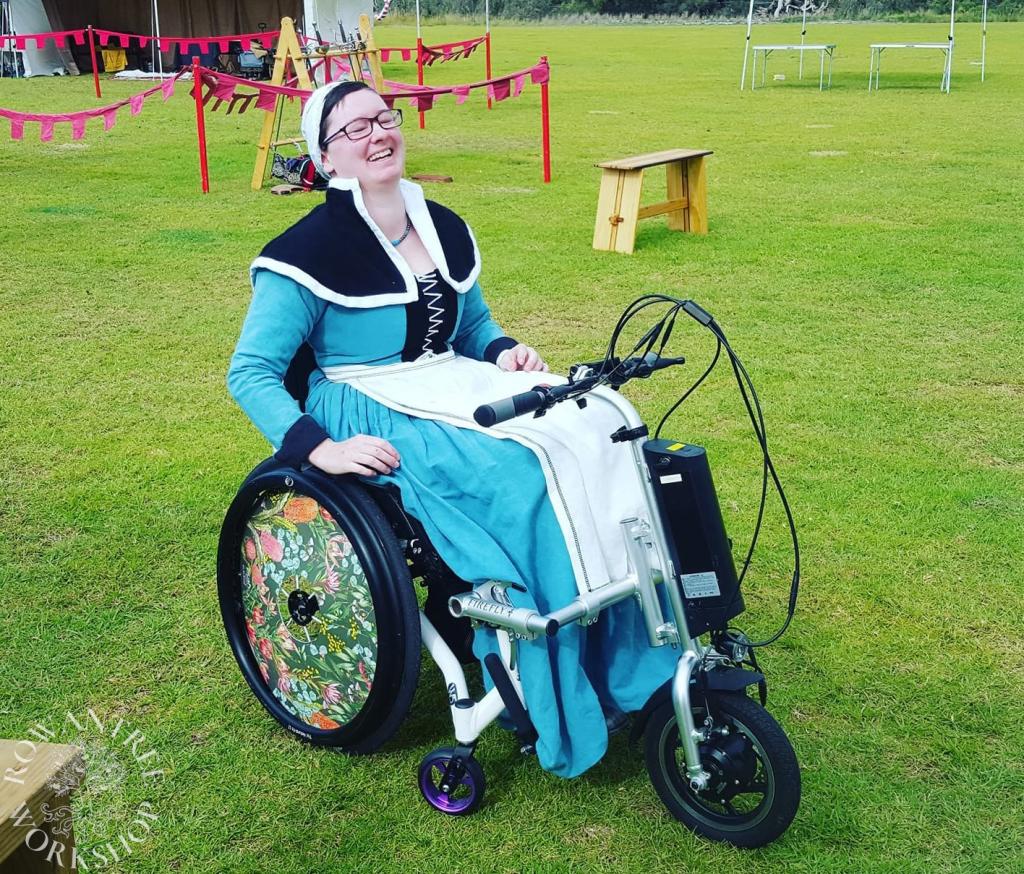An early 16th century middle class gown, based on a portrait by Holbein the Elder.
Although many people make their early 16th century German gowns with elaborate sleeves (or no sleeves at all), these simple long sleeves were very common in the middle class – as was simple black guarding. I’d wanted to make a blue German gown for some time, but it needed to be the right blue – a natural dyed colour.
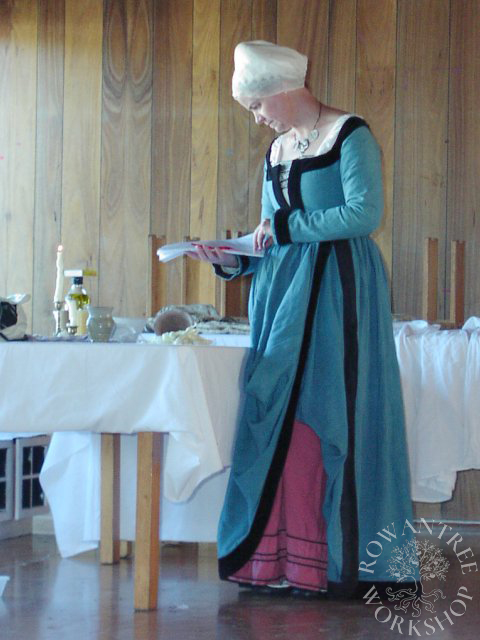
Research & Design
This gown is based on the Portrait of a 34 year old woman by Hans Holbein the Elder. I loved the whole outfit and wanted to make the lot – Rock, Hemd, belt and Steuchlein. But yellow does not suit me at all.
I found a contemporary portrait by Ulrich Apt in very similar style, although plainer – this one in the blue I was looking for. Perfect!
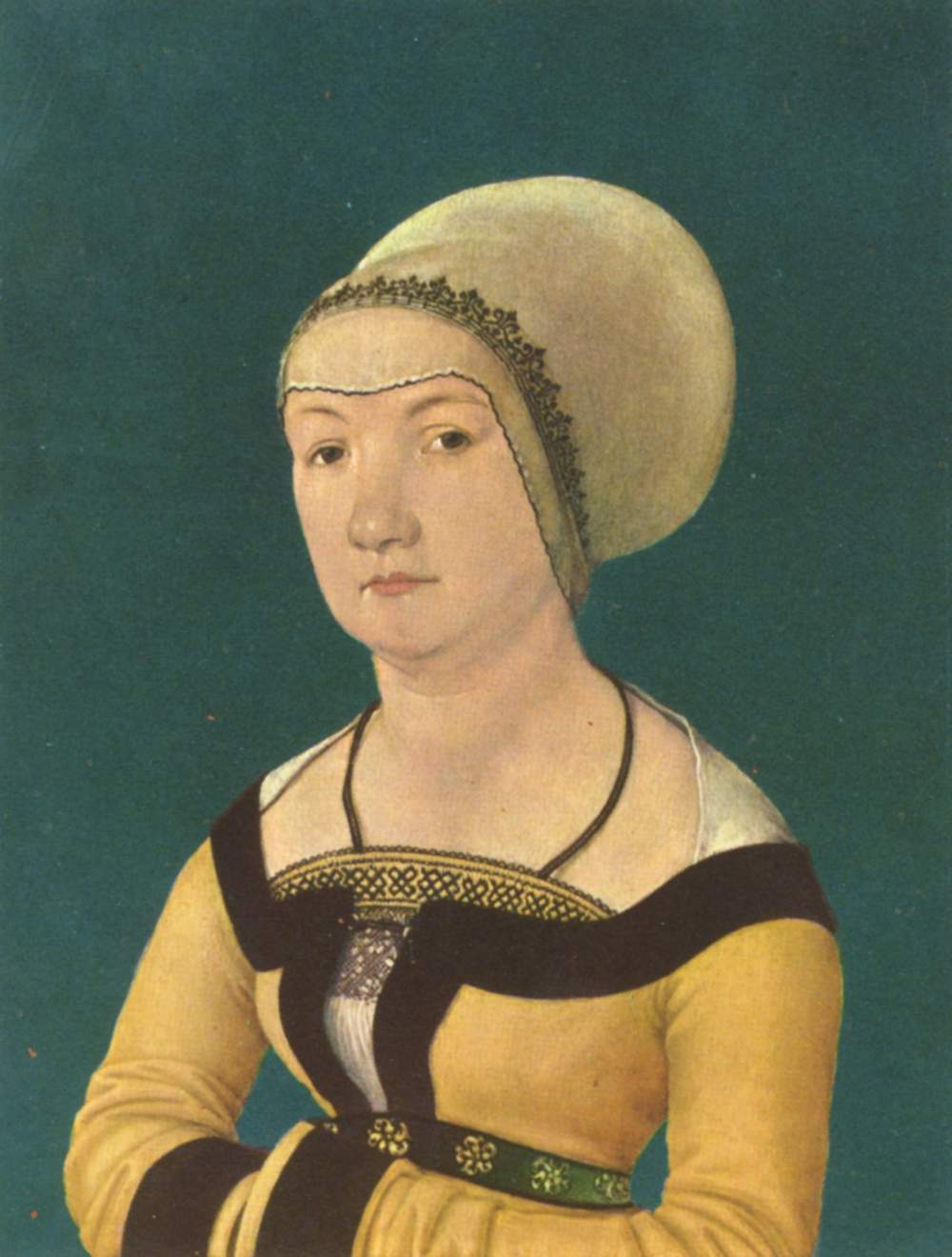

Source: The Metropolitan Museum
In both cases, the front of the bodice is not completely closed, but fastened at the top with a tie, or with hooks and eyes. Both have simple sleeves, black guarding and a wide necked Hemd (smock). The portraits do not show the skirt, so I have assumed a simple pleated skirt with a single hem guard.
Construction
First step was dyeing the fabric. I’d found a good medium-weight linen, but in a bright turquoise. Over-dyeing it with a commercial blue dye made a much better colour.
To deal with the on-the-shoulder-point neckline, I used the same Raglan cut I had developed for my red Holbein gown. However, by this time I had figured out the importance of rotating the sleeve to get the right cuff shape, so the sleeve pattern is very different.

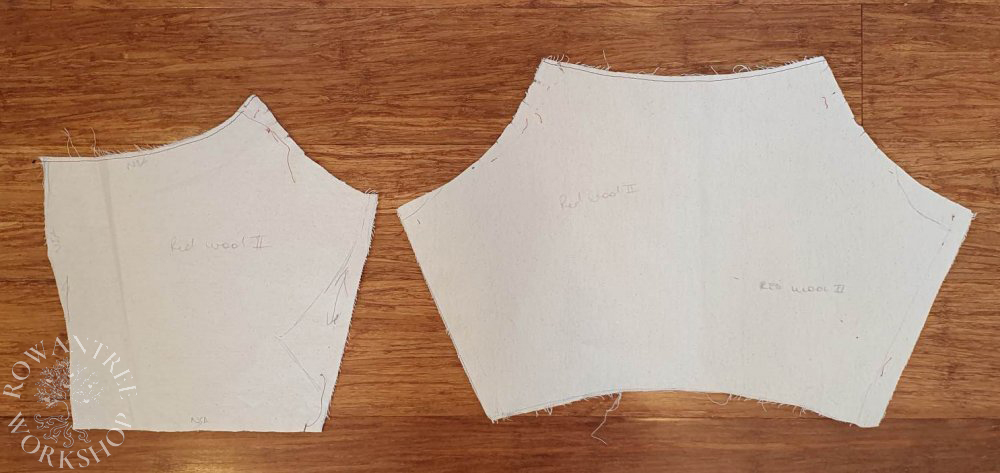

As usual at this time, I interlined the bodice with heavy cotton canvas, and the sleeve with a lighter linen. The rotated sleeve meant a different construction sequence. I sewed the bodice side seams, sew the sleeve seams, and then inserted the sleeve into the bodice.
With the open front, it was essential for the sides to stand on their own, so I basted and sewed the black guarding around the neck edge without bag-lining. I sewed the front seam allowances down to the canvas to form a slim pocket, and inserted a piece of plastic boning, before slip-stitching in the lining.
For the skirt, I followed the same construction as for the Holbein dress, with a black velveteen guard and linen lining.
Accessories
The heavily embroidered Hemd (smock) is one of the standout features of the Holbein portrait. I worked several samples to see if I could reproduce it, but none of them pleased me, so I usually wore it with a plain Hemd.
I made an underskirt in pink linen, made of straight drops pleated into a simple waistband. The linear decoration was inspired by the underdress shown in Holbein the Younger’s costume study of Basel Woman Turned to the Left.

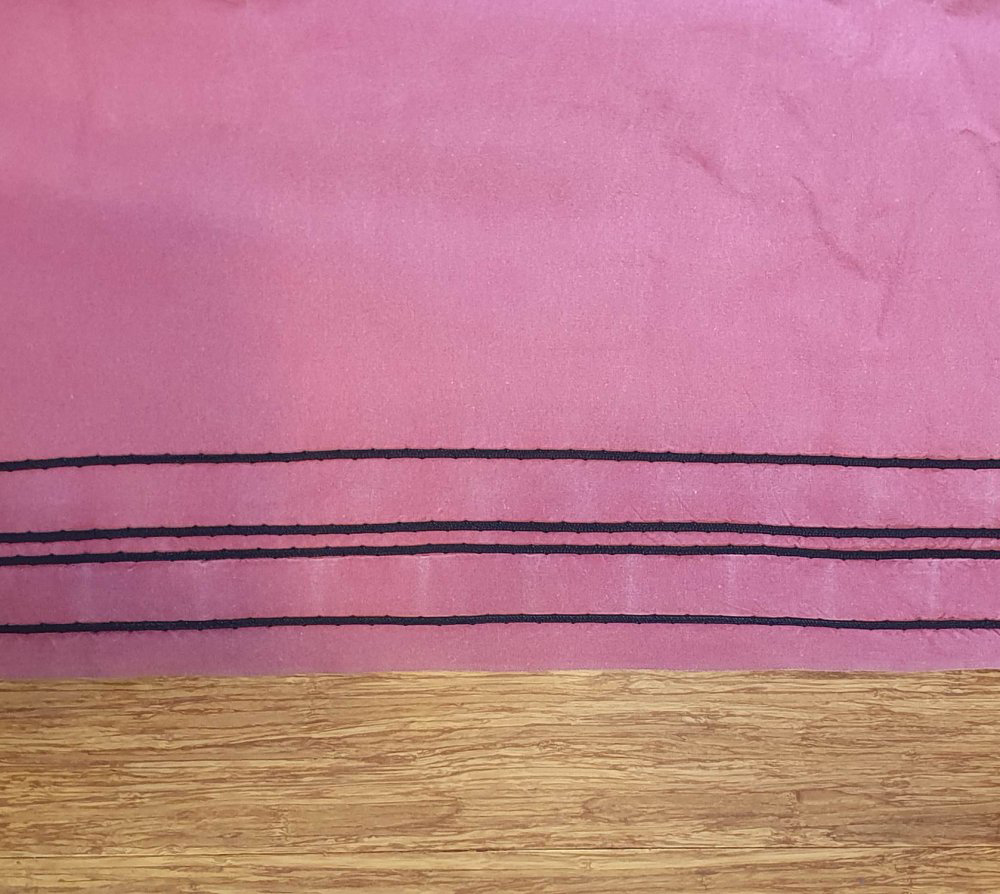
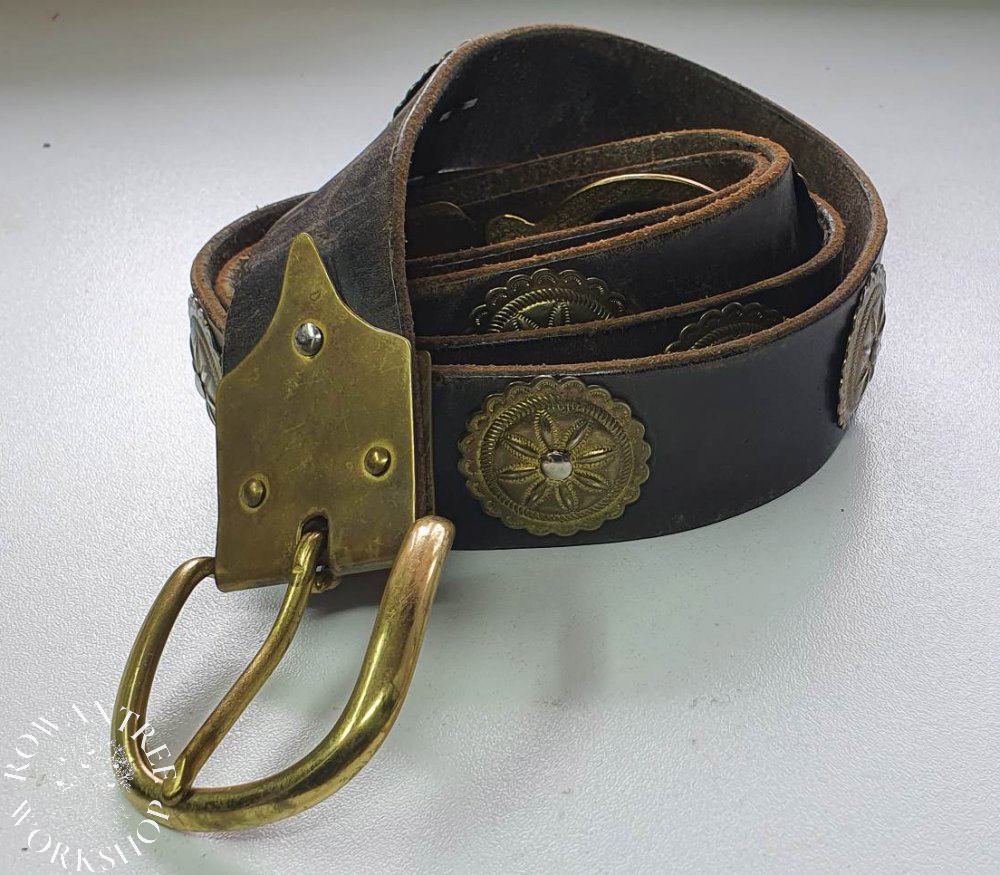
I did make the belt, making my own buckle plate from sheet brass, and decorating with large brass mounts – a bit too large really, but the closest I could find. And I did embroider the matching headwear, charting the embroidery from the portrait..
I was pleased with the outfit and wore it for many years. I’d kept a fabric sample, which proved useful when I needed to mend the skirt after being holed by a coal from a campfire.
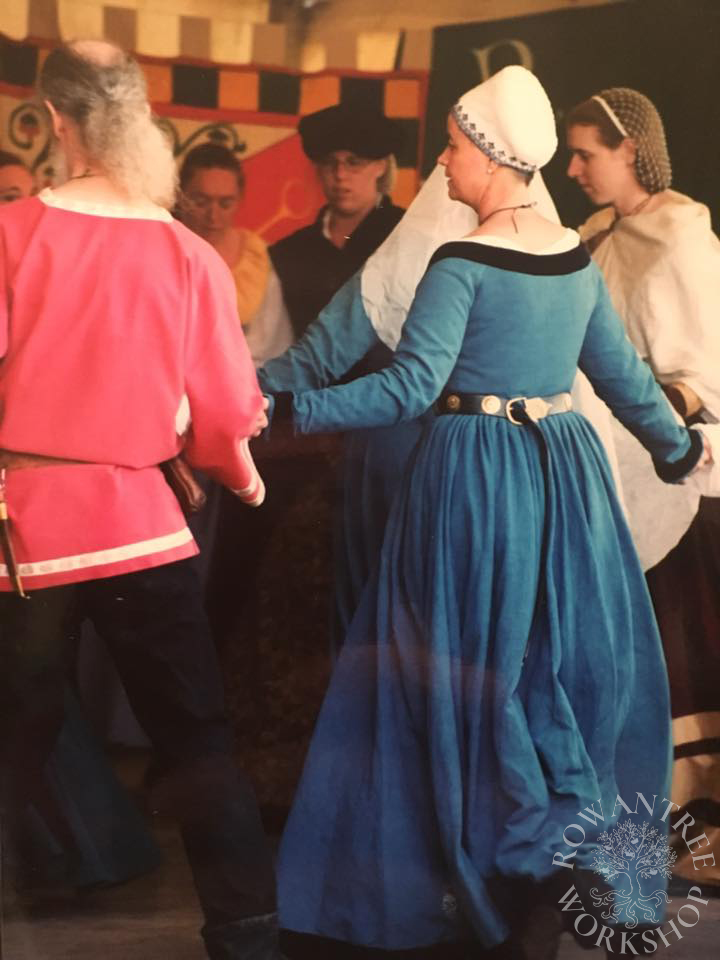
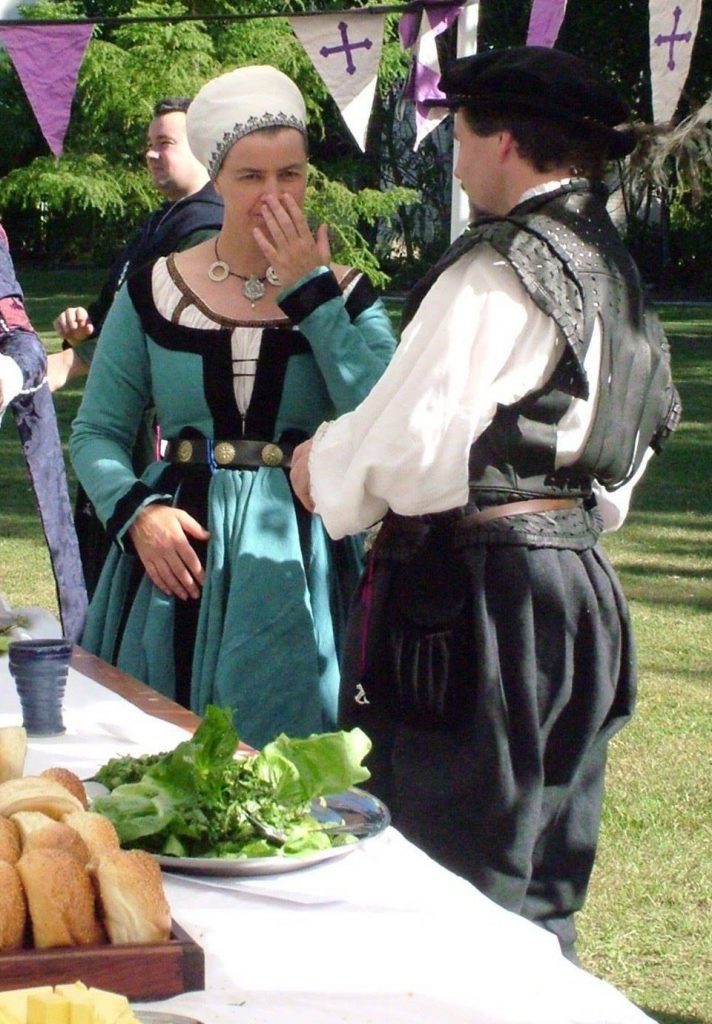
Afterthoughts
Over time, the overdyed linen went a lighter blue, but still a believable 16th century colour.
I now know how I would make the Hemd, but these days I need more support than an open front gown provides – and a closed style would hide the embroidery. A possible future project…
When I did my big wardrobe cull in 2021, I passed this one on to Isolde, who adapted it to a more Netherlandish style.
